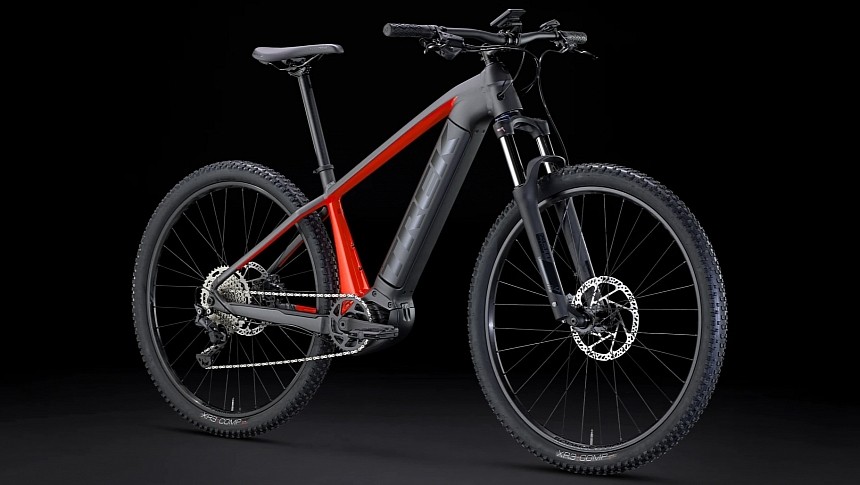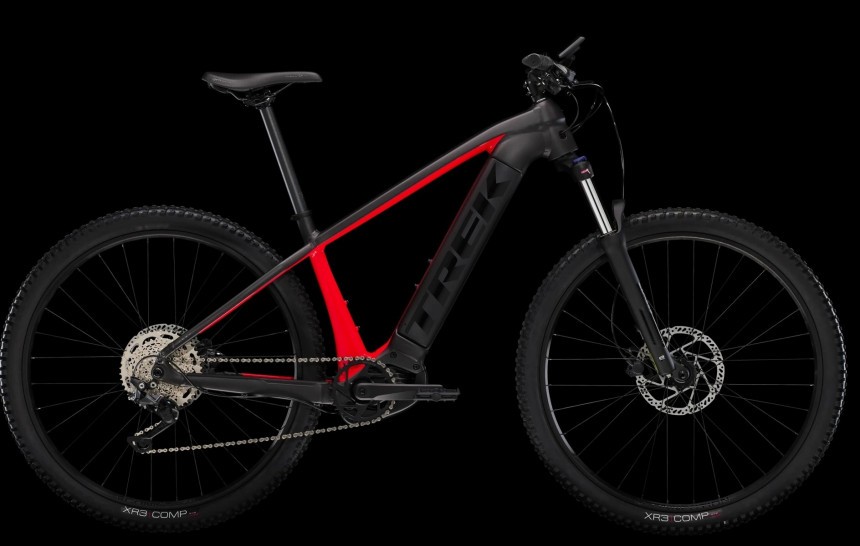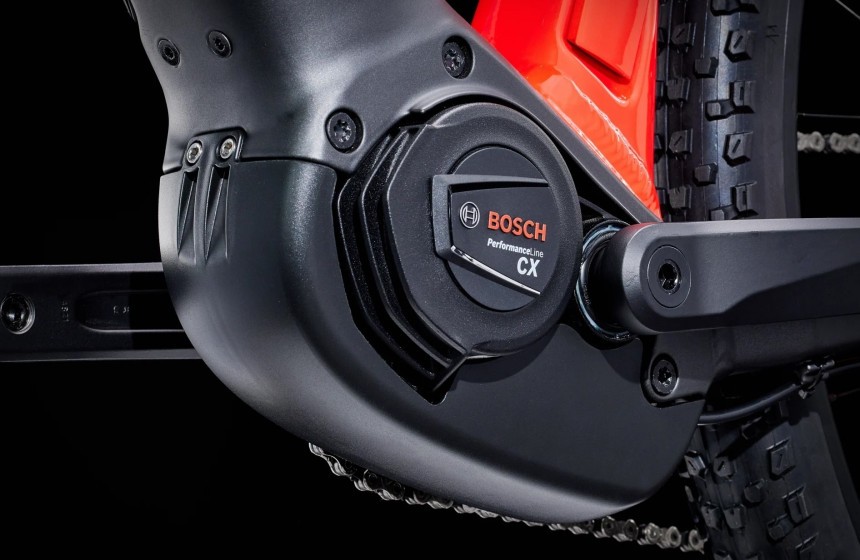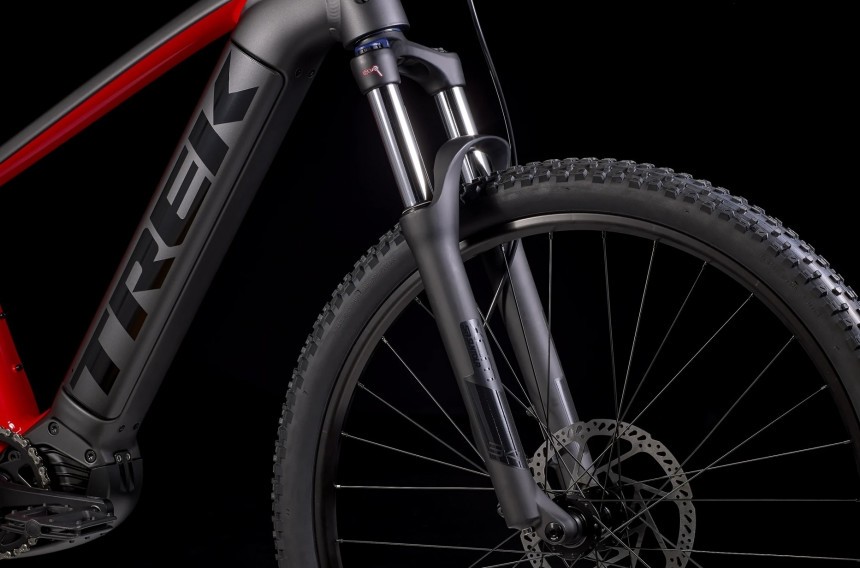You'd think that with all the financial funk going on in our society, products would go up in price. Well, Trek, one of the cycling industry's most notable brands, seems to have achieved the impossible and managed to drop prices on new machines as opposed to last year's models.
Folks, the e-bike before us today is known as the Powerfly 4, and while I've covered this lineup of bikes before, this is the newest model that Trek has unveiled, the Gen 4. But, what's most surprising is the fact that Trek manages to lower the price of their machine, even though it's the newer model. How was this achieved? That's exactly what we're here to find out.
First of all, I feel that we can skip over the introductions as to who Trek may be and what they have to offer folks like you and me. After all, this brand has been active in the industry since 1976, and since then, has risen to the top of the cycling industry to be one of the go-to brands for athletes. Just turn on your TV to any sports channel, and chances are that you'll spot a Trek machine over the course of the next few seconds or so.
Well, the Gen 4 Powerfly is the continuation of Trek's beloved electric hardtail MTB lineup. With that, we can expect the absolute peak in terms of components and riding experience. Still, the catch is that you'll have to dish out $3,650 (€3,360 at current exchange rates) for a new one, which, surprisingly enough, is lower than the previous Gen 3's price by a good $200 (€183).
Overall, this EV starts off like most other e-bikes of this stature, with nothing more than an aluminum frame that's been bulked up and strengthened to support the added weight of e-components and the stresses that arise during a ride.
Personally, I love myself a hardtail, but there is something that pushes me away from the Gen 4, as the Gen 3 did as well: that horrendously massive seat tube, the one that looks like it just swallowed a brick. I get it, the BB well needs to be reinforced and shaped around a motor, but god damn, that's ugly! But, if you manage to look beyond the visual side of things, we'll find that Trek built a rather healthy machine that's already seen 75 reviews, of which most are five stars.
As we continue our exploration of the Powerfly 4, I want to draw your attention to just two other sections of the frame. The first is the head tube, tapered and ready to take a beating, and the way Trek integrates the battery pack into the down tube, removable via a side-load rather than underneath or on top of this tube. This also means that you can double your range by grabbing an extra pack.
Speaking of battery packs, it's important to take note that Trek has once again chosen Bosch as the supplier of electronic components, a revert from the recent dabble with TQ gear. Overall, a 500 Wh battery is mounted into that down tube, which is then paired with a Performance CX line motor from the same German powerhouse.
Overall, this motor is encased in a magnesium motor body, helping reduce weight, but best of all, the CX can crank out 85 Nm (63 lb-ft) of torque, a trait that you'll surely feel as you're cranking it uphill. Oh, and because it's a mid-mounted motor, you can be looking at a longer life as these motors are exposed to less vibration than those mounted to wheels, not to mention the ability to utilize power more efficiently. That alone might be worth the extra cash.
Further exploration of the Gen 4 also shows that the drivetrain is the same as that on the Gen 3. Nothing more than a Shimano Deore setup with 1x10 speeds is the base for your riding magic, and brakes are handled by Tektro with 6-bolt, 203 mm (8 in) rotors.
Now, hardtails feature no rear suspension, as we can clearly see, but the front is designed to take up hits from roots, drops, and whatever else your rides throw at you. Here, Trek has chosen to throw on an SR Suntour XCM 34. In my opinion, this is a rather low-budget component, and if you really want to take the Gen 4 to the next level, I recommend dropping a few hundred dollars more on your purchase and throwing on something a bit beefier.
Once Bontrager rims, tires, saddle, handlebar, and grips are thrown on, the Gen 4 starts to take on its final form. Just a few more Bosch trinkets, like the Intuvia 100 controller and LED remote, and the Gen 4 is complete. Funny enough, I still don't understand how Trek managed a lower price for their newest Powerfly because Intuvia is a step up from last year's Purion controller. Even the charger can now crank out 4 A instead of 2 A, so double the recharging rate.
Maybe, just maybe, Trek figured out that folks like you and me need a bit of an incentive to get into e-biking, and by dropping prices just a tad and throwing on some better gear, they seem to be winning us over. Be sure to check out this crew's clearance sale, which is going on until December 31, 2023.
First of all, I feel that we can skip over the introductions as to who Trek may be and what they have to offer folks like you and me. After all, this brand has been active in the industry since 1976, and since then, has risen to the top of the cycling industry to be one of the go-to brands for athletes. Just turn on your TV to any sports channel, and chances are that you'll spot a Trek machine over the course of the next few seconds or so.
Well, the Gen 4 Powerfly is the continuation of Trek's beloved electric hardtail MTB lineup. With that, we can expect the absolute peak in terms of components and riding experience. Still, the catch is that you'll have to dish out $3,650 (€3,360 at current exchange rates) for a new one, which, surprisingly enough, is lower than the previous Gen 3's price by a good $200 (€183).
Personally, I love myself a hardtail, but there is something that pushes me away from the Gen 4, as the Gen 3 did as well: that horrendously massive seat tube, the one that looks like it just swallowed a brick. I get it, the BB well needs to be reinforced and shaped around a motor, but god damn, that's ugly! But, if you manage to look beyond the visual side of things, we'll find that Trek built a rather healthy machine that's already seen 75 reviews, of which most are five stars.
As we continue our exploration of the Powerfly 4, I want to draw your attention to just two other sections of the frame. The first is the head tube, tapered and ready to take a beating, and the way Trek integrates the battery pack into the down tube, removable via a side-load rather than underneath or on top of this tube. This also means that you can double your range by grabbing an extra pack.
Overall, this motor is encased in a magnesium motor body, helping reduce weight, but best of all, the CX can crank out 85 Nm (63 lb-ft) of torque, a trait that you'll surely feel as you're cranking it uphill. Oh, and because it's a mid-mounted motor, you can be looking at a longer life as these motors are exposed to less vibration than those mounted to wheels, not to mention the ability to utilize power more efficiently. That alone might be worth the extra cash.
Further exploration of the Gen 4 also shows that the drivetrain is the same as that on the Gen 3. Nothing more than a Shimano Deore setup with 1x10 speeds is the base for your riding magic, and brakes are handled by Tektro with 6-bolt, 203 mm (8 in) rotors.
Once Bontrager rims, tires, saddle, handlebar, and grips are thrown on, the Gen 4 starts to take on its final form. Just a few more Bosch trinkets, like the Intuvia 100 controller and LED remote, and the Gen 4 is complete. Funny enough, I still don't understand how Trek managed a lower price for their newest Powerfly because Intuvia is a step up from last year's Purion controller. Even the charger can now crank out 4 A instead of 2 A, so double the recharging rate.
Maybe, just maybe, Trek figured out that folks like you and me need a bit of an incentive to get into e-biking, and by dropping prices just a tad and throwing on some better gear, they seem to be winning us over. Be sure to check out this crew's clearance sale, which is going on until December 31, 2023.













